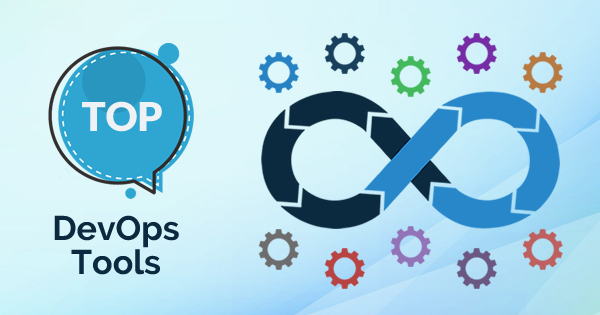Reading Time: 6 mins
Source Code Repository
1. Git
Git is a web-based distributed version control system, and also acts as a collaboration platform for software developers across the world. It is a free and open-source platform that helps to review codes, manage projects and gain visibility over the entire SDLC stages. Further, the Nonlinear Development behaviour of Git allows you to perform rapid and remote operations such as branching, merging and usage of specific tools.
Features:
- Better code and collaboration
- Security and controlled access
- Access to other repositories like SVN & CVK
- Remote operations and webhook integrations
- Maximized version control system (VCS)
- Integrated issue and bug logging
- Branches with graphical representation
2. Subversion
Offering from the Apache foundation, it is an open-source version control system that used to manage files, directories and track the changes made over time. It is designed to be the successor of the Concurrent Version System (CSV) and facilitates in data recovery like retrieving the multiple versions of source code.
Features:
- Operated across different networks
- Able to retain the older versions of data
- To track the data history
- Real-time data modification by multiple users
- Atomic commits (self-contained units)
- Versioning for both files and folders
- Ease of implementing new network functions
3. Azure DevOps Services
From Microsoft, Azure DevOps services offer an integrated set of services and tools to manage the software development either with TFVC (Team Foundation Version Control) or Git for both agile and waterfall methodology. The services offered to cover the entire SDLC stages and enable the DevOps capabilities via source control, build pipelines and work tracking. Provides back-end support for integrated development environments (IDEs), but produces optimal results when worked with Microsoft Visual Studio and Eclipse.
Features:
- Team dashboard and wiki
- Supports Manual and Exploratory testing
- Analytics services and Power BI (Business Intelligence) reporting
- Cloud-hosting services
- Reduced maintenance costs
- Other administrative services
- Support for multi-team collaboration
Build server & Deploy automation
1. Jenkins
Jenkins, an open-source automation server widely known for performing continuous integration and build automation. It has a simple, extensible and user-friendly UI. Written using Java, it can be used to automate the entire SDLC (software development life cycle) stages and comes with more than 1000 plugins to support building and testing of any kind of projects. The supported operating systems include Windows, macOs and other Unix systems.
It automates the build and test process at a rapid rate via monitoring of repeated tasks, continuous testing and early detection of errors. Being a server based system, it runs in servlet containers like Apache Tomcat. It supports version control tools such as Git, Subversion, Mercurial, CVS, BitBucket, etc. Further, the master-slave architecture of Jenkins’s reduce loads via distributed builds and possesses the feasibility to deploy in a cloud-based platform. Highly reliable and consists of one of the largest support communities which makes the possibility of stable release every three months.
Features:
- Ease of use and setup
- Simple and user-friendly
- Extendability via plugins
- Effective distribution of workload
- Execution of shell script
- Platform-independent tool
- Static code analysis
Configuration Management
1. Puppet
Being a leading automation tool for configuration management, it aids in deploying, configuring and managing the servers. It is opted by more than 30,000 companies including Google, Siemens and schools such as Stanford and Harvard. It runs in any newer and older OS that supports the Ruby language and has been continually updated since it’s commercially released in 2005.
Features:
- Portable infrastructure
- Consistency of servers
- Collaboration and scalability
- Speed of recovery and deployment
- Automatically reverts at the time improper reconfiguration
2. Chef
A chief competitor of Puppet, Chef, helps to streamline the configuring and maintaining of the servers and integration available with all the major cloud providers. Written using Ruby (a domain-specific language), it automates tasks such as infrastructure configuration, application deployment, managing configurations across networks.
Features:
- Offers hybrid and SaaS solutions for Chef Servers
- Ideal for OS and middleware management
- Integration with major cloud providers
- Multiple-platform support
3. Ansible
Ansible, a powerful tool used to automate a multi-tier software environment. It is written using a simple and human-readable syntax called YAML. Since Ansible will be installed on your local system, it is completely agentless, thereby, no need to install any additional firewall ports on your system. Unlike Chef and Puppet, it is a push type configuration management tool.
Features:
- Simple and easy to learn
- Ease of installation and use
- Agentless (since it’s installed on a local machine)
- Secure passwordless authentication (SSH)
- Feasible push architecture
- Effective orchestration
Infrastructure (Virtual) Automation
1. AWS CloudFormation
The AWS CloudFormation as a configuration orchestration enables you to define your infrastructure for automating deployments. This facilitates you to submit changes to the infrastructure and manage the effect it provides over other resources and dependencies. Being offered from Amazon Web services (AWS), it can be used only with AWS cloud services. Further, the Rollback Triggers feature reverts the stack to the pre-deployable stage at the time of any alarm and threshold breach.
Features:
- Written using simple YAML syntax
- Benefits of Rollback Triggers
- Quick replication
- Ultimate monitoring and logging
- Ease of control and track changes
2. Microsoft Azure
Similar to AWS, Azure Resource Manager enables you to code your application’s infrastructure and dependencies in a single declarative template. A template that is feasible to use in the SDLC stages such as testing, staging and production. It helps to organize the resources by categorizing them into groups that can be either deleted or deployed in a single action.
Features:
- Perks of single declarative template
- Resource deployment with consistency
- Categorized resources for effective management
- Controlled resource access
- Security with explicit locks
- Logging of user actions for auditing
Deployment Automation
1. AWS CodeDeploy
AWS CodeDeploy helps you to automate your application deployment to various environments such as testing, staging and production (on-premises servers, Amazon EC2, AWS Fargate, AWS Lambda). It introduces incremental changes and performs regular health check-ups to ensure the software’s maximum uptime.
Features:
- Easy adoption and rapid new releases
- Prevents deployment down-time
- Avoids error-prone human interference
- Centralized control
- Easy reuse of existing setup code
- Integration with existing CD toolchain
2. Travis CI
Travis CI, an automation tool for distributed continuous integration services that helps to build and test the software projects hosted at Git. It runs tests across different machines with the installation of various software and provides impeccable support to most of the languages such as PHP, Python, Perl, C++, Ruby, and so forth.
Features:
- Quick installation and setup
- Testing support for pull requests
- Pre-installed database services
- Cross-platform support
Test Automation
1. Selenium
Generally, referred to as Selenium Testing is a free and open-source automation framework for exclusively testing web applications. Being consists of a set of open-source APIs, it is used to validate (via automation) whether a web application performs as expected. The Selenium family comes with a set of components, known as Selenium Suite, provided to cater different unique testing needs.
Features:
- Cross-browser and multi-language support
- Platform independent
- Built-in reporting modules
- Support for extensions
- User-friendly interface
- No programming knowledge required
Log Management / Performance Management
1. Splunk
Software which makes efficient use of Big Data to search, visualize and monitor machine-generated data from apps, websites, sensors, etc. to provide operational intelligence. It is primarily used for business, web analytics, application management, security and compliance purposes.
Features:
- Ease of use and implementation
- Reports with interactive charts and graphs
- Direct storage facility
- Automated data search
- Faster ROI
- Agile statistics and speed
Monitoring
1. Nagios
Nagios, open-source software tool used for continuous monitoring of the applications, system metrics, server resources, network elements and custom services. Apart from working as a monitoring tool, it works as an altering service at the times when a critical error occurs and gets resolved. Originally designed to support Linux, it now works well on other Unix alternatives too. Noted for its flexible and scalability nature, it is the widely preferred monitoring tool among the DevOps culture.
Features:
- Parallel service-checks
- Automated error resolution
- 4000+ plugins
- Extendable architecture
- Multi-tenant capabilities
- Distributed monitoring
Final thoughts
Be it an attempt for the successful implementation of Agile methodology or DevOps (an offspring of Agile) practice in the Software Development Life Cycle (SDLC), the automated tools is an inevitable part. Without the successful invocation of the automation tools that are used to achieve different specifications, you cannot deliver the business value to its end-user nor the speed, scalability, productivity and defect-less application.

